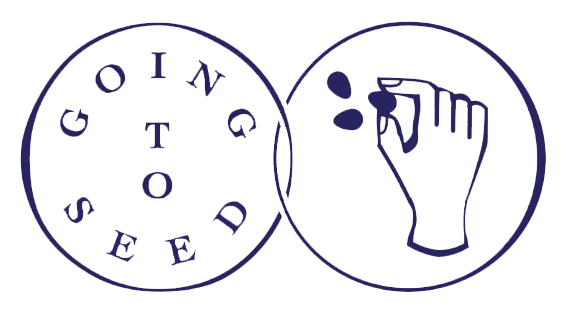by Julia Dakin
Recently I had an interesting talk with Curzio Caravati, the passionate president of Kufi Farm, a nonprofit that includes the Kenosha Potato Project in Wisconsin. Inspired by Michael Pollan's book "The Botany of Desire," Curzio was fascinated to learn that potatoes have berries and seeds, which were virtually unavailable at the time. He has developed about 20 unique potato varieties and inspired hundreds of new potential potato breeders. I found his insights and process approachable, so I’m sharing it here for any other aspiring potato breeders.
 |
| Green diploid berries almost ready for harvesting photo by Curzio Caravati |
To kick off each growing season, Curzio starts his tubers by placing them in egg cartons under bright sunlight on March 15 and plants them outdoors in early April to make the most of the long days from June 15 to June 25. Most of these tubers are ones he grew originally from true seed over the years, and have been ‘keepers’. Light frosts in late April or May typically don’t harm the plants. He grows potatoes in 362 containers without irrigation to select for drought and frost tolerance and groups his plantings into high production, long season, early, and main crop categories.
When growing from true seed, Curzio starts seeds on March 15 and transplants the seedlings outdoors in early June (two seedlings per container). Don’t plant the seeds (or tubers) too late! They should take advantage of the days with the longest daylight hours– June 15 to June 25th (the same for tubers). So, by mid-June, they should have decent sized leaves. He says that if you’re late, just wait until March next year. You might get micro tubers, but you might not.
 |
| Seedlings ready to transplant outdoors photo by Curzio Caravati |
For pollination, he welcomes the natural buzz-pollination by bumblebees and the diversity that it brings. Diploid varieties require cross-pollination to produce berries, while some tetraploids self-pollinate more easily.
Curzio’s seed-grown plants typically yield about half a pound or less per plant. He selects the three largest tubers from each plant for the next season, continuing the selection process over several years to identify "keeper" varieties. He never saves berries from the first-year plants, since they need at least two years to prove themselves as ‘keepers’.
For tuber-grown plants, he cuts the vines and dumps the container into a wheelbarrow, making sure to remove the original planted tuber to prevent it from ruining the stored tubers. He tracks various traits, tuber weight, and keeps track of everything. When he finds a potato in the second year that has a desirable color, flavor and a decent yield in his non-irrigated conditions, he includes those tubers in future plantings. The true colors of the plants emerge in the second or third season, and he considers a keeper rate of 5-10% to be excellent.
 |
| Tasting all the potato colors photo by Julia Dakin |
Curzio eats potatoes for almost every meal, and he’s in excellent health!
Every year, Curzio harvests berries from his best plants and shares them with beginner growers through the Kenosha Potato Project seed train. He doesn’t expect anything in return, but hopes that the new growers will spread seeds and tubers within their communities. Each potato seed holds the potential to produce a unique variety, offering more drought or frost tolerance, new colors and delicious flavors. They are also virus-free since diseases rarely transmit through seeds. Seeds can remain viable for over 70 years and are easy to share globally.
Last year, his seeds were included in the Going to Seed potato project distribution. He’s also collaborating with the Blue Zones project and the USDA gene banks. For those ready to start their own potato-growing journey, Curzio’s advice is to grow varieties you love to eat and be patient, as it takes several seasons to determine if a new variety is worth keeping. Expect some inconsistent yields in the early generations of TPS-grown plants. And when a variety starts to decline in yield or health, start over with seeds from that plant – you might just get something even better.
Are you growing potatoes from seed this year? Share your photos and experience with others in the Going to Seed community!

